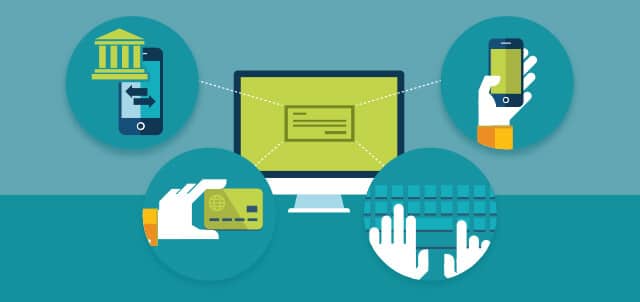Keeping up with the latest payroll software features and systems can present challenges, but this quick list will help get you up to speed.
Whether you’re in the market for new payroll software or you just want to evaluate your current process, here are four must-have features that your system should include:
1. Direct deposit
At this point, not having direct deposit can leave a negative impression with your employees. It suggests that you’re not keeping up with common payroll standards and employee expectations. Direct deposit is simply the new normal.
Without direct deposit, employees must wait to receive their paycheck at work, and then take it to the bank or check cashing service on their own time. From there, a waiting period ensues until the bank makes the funds available for their use.
Additionally, printed checks are likely costing your employees in some form.
For example, check-cashing services charge as much as three percent per paycheck, according to a 2013 Network Branded Prepaid Card Association report. Likewise, many banks now require direct deposits with free checking accounts to ensure there’s money coming into the account. Meaning, without direct deposit, your employees might be forced to pay a monthly maintenance fee to have a checking account.
By eliminating the need for these paper check tasks, you will be saving a world of time, effort and money for yourself, too. With direct deposit, you can say goodbye to signing and distributing paper checks, which can be not only costly, but also difficult to coordinate, particularly if you have multiple locations.
2. Payroll card
In addition to a direct deposit option, a payroll card gives your employees increased flexibility by allowing them to receive paycheck funds through a preloaded debit card. Whether the payroll card is used as a sole payment method, or as a way to deposit a portion of their check, it’s the best alternative to direct deposit that’s available in the marketplace.
Payroll cards are particularly useful as a means of paying employees who don’t have a checking account and cannot use direct deposit. You might be surprised to learn that without direct deposit, someone earning $26,000 a year could pay as much as $750 to cash their check each year, according to the Network Branded Prepaid Card Association report.
For those without checking accounts, payroll cards function the same way as direct deposit – funds are automatically added to employees’ cards through your payroll system. This eliminates the need to cash a check, and it allows employees to make purchases, get cash at ATMs or pay bills online.
For employees who have checking accounts, it can be used as a secondary method to receive paycheck funds to allow for better budgeting. For instance, an employee can easily add $100 per paycheck to a payroll card that he gives to his child who is away at college. The card is then automatically funded the designated amount each time the employee is paid.
3. Employee self-service site
After a solid payment method, perhaps the most beneficial payroll system tool is an employee self-service site. This puts all of your employees’ personal payroll data at their fingertips so they have easy access to their paystubs, W2 forms and paid time off balance.
Without this access, employees have to bother you or your HR administrator to get this information. This can mean you’ll have to take time away from your strategic and revenue-generating projects to fulfill their requests.
What’s worse is that these interruptions often must be addressed quickly. For example, let’s say your employee is attempting to purchase a new car after his was totaled in a flash flood. He has applied for a new car loan, but the bank has asked that he submit his past two paycheck stubs as proof of income before they’ll approve the loan. Since the employee hasn’t been saving his paystubs, he’ll need your help collecting the documents.
When an employee self-service site is available, employees can log in and print out their paystubs immediately without your assistance. This puts the accountability on the employee and eliminates disruptions.
4. System notifications or alerts
The final and often most overlooked payroll feature, which can have an incredible impact on both your payroll and HR efforts, are system notifications and alerts.
First and foremost, notifications and alerts help you stay on schedule by providing reminders to input your payroll data for the pay period. Payroll software should also be updated timely with tax law changes especially at year-end to ensure a smooth start to the new year and end of year tax filings.
Beyond streamlining your payroll process, alerts related to birthdays and work anniversaries are a useful tool in your employee retention efforts. For instance, say Barbara is about to celebrate her four year work anniversary with the company. If the payroll system alerts her manager that this milestone is coming up, her manager gets the heads up needed to make sure Barbara is recognized for her achievement at the next employee meeting.
Customization options are helpful, too – you obviously don’t want to get alerts about everything, so your payroll software should give you the ability to pick and choose the reminders you receive.
Your payroll software should also allow you to select who will receive the notifications. While a notification about Barbara’s work anniversary might be useful to her manager, this information is not likely useful to the accounting department.
What’s the difference?
As you consider payroll options, keep Insperity® Payroll Services in mind. In addition to direct deposit, a payroll card option, an employee self-service site and system alerts, we provide you with dedicated support. There is no call maze to navigate – simply contact your payroll consultant who knows your account.


